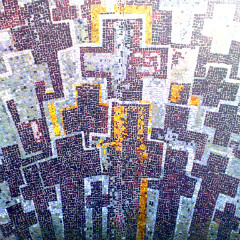
In his fourth letter, senior demon Screwtape holds forth on the subject of befuddling a new Christian in his prayers. He starts by mentioning a line from the romantic poet Samuel Taylor Coleridge about how he prayed without “moving lips and bended knees.” Coleridge thought he nailed it well enough by merely feeling prayerful, a view that Screwtape endorses in the lines that follow. “At the very least, they [Christians] can be persuaded that the bodily position [like kneeling] makes no difference to their prayers,” he says, “for they constantly forget . . . that they are animals and that whatever their bodies do affects their souls.”
What we do physically affects us spiritually. The most obvious picture of this is the one Lewis mentions, kneeling in prayer. Whether it’s bowing our heads, hunching over the seat of a chair, leaning into a kneeler at church, or hitting the floor with full-on prostrations, bending to God in prayer has a qualitative effect on our prayers and on ourselves. God made us with bodies and spirits; they are linked. If demons know this about us better than do we, we’re in trouble.
Another example of this is crossing yourself. I grew up in an evangelical church and only saw people cross themselves if they were Catholics. Generally I was taught (or at least assumed) that this was vain superstition at work. Perhaps in some cases it was. All I know now is that making the sign of the cross has a powerful qualitative effect, much like kneeling in prayer.
I make the sign of the cross when I pray, when I’m tempted, when I drive, when I walk, when I’m thankful, when I face something horrible or difficult. Having grown up the way I did, this did not come easy at first. I felt very self-aware and hesitant. But the more I did it, the more I came to cherish—and even need—to cross myself.
For one thing, it’s a form of prayer. It’s also a powerful form of identification. Making the sign of the cross says to yourself (and anyone watching) in a bold and physical way that you belong to Jesus, that you belong to God. When faced with temptation, wrestling with a bad attitude, or even feeling grateful for the mercies of God, is there anything better? Identifying as Christian by using the sign of the cross is a physically demonstrative way to communicate your reliance on God and your identity in Christ, and it affects your spirit in a positive way.
For any believer—whether Catholic, Protestant, or Orthodox—such a confession is the furthest thing from superstition. It’s another step (watch out, Screwtape) toward serious devotion.











